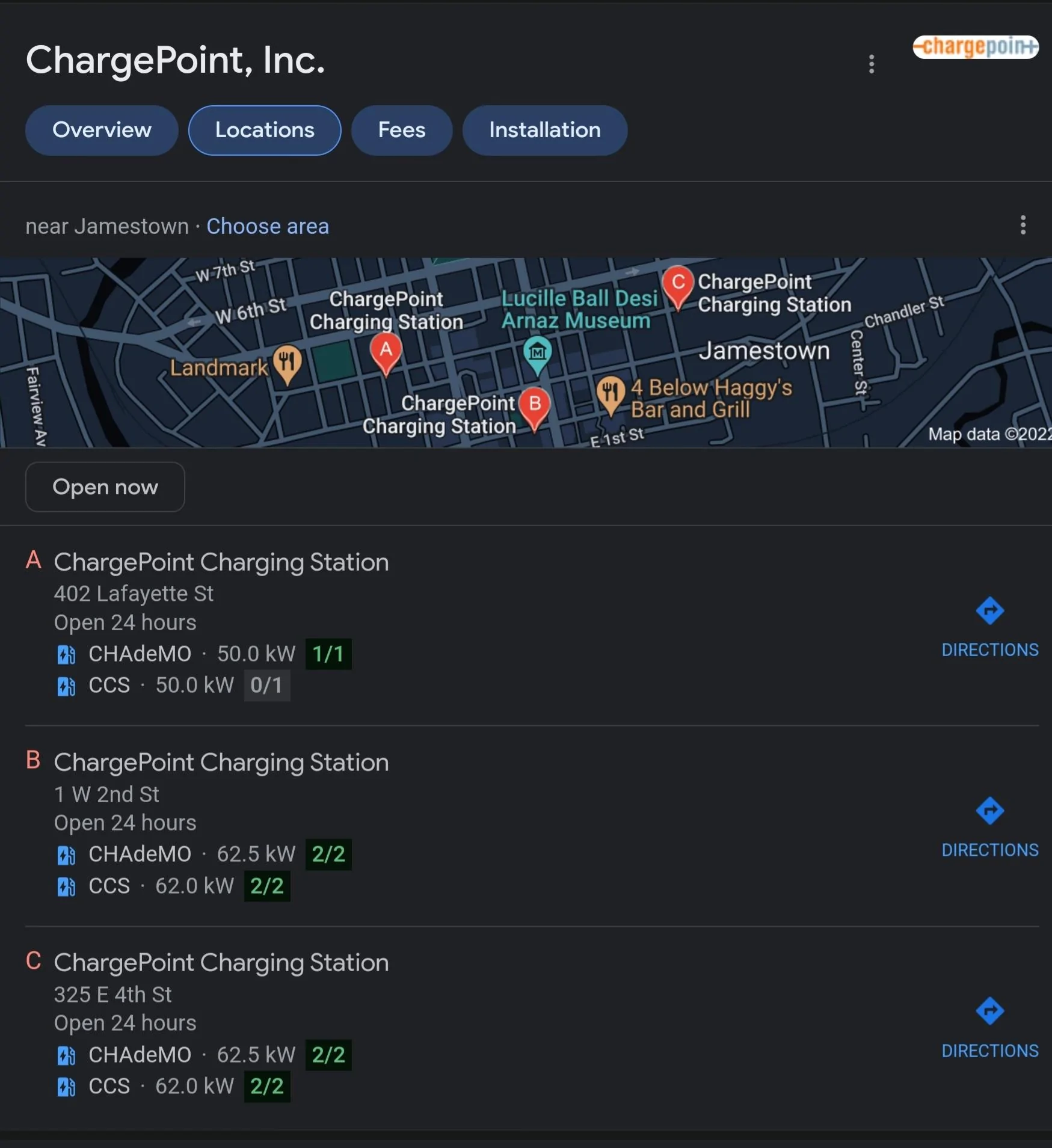RickLightning
Well-known member
Wonder why the chargers in Jamestown, NY aren't showing. ChargePoint 125kW...Removing the Tesla fast charger in Salamanca, NY leaves me with this map of a fast charging abyss. I spend a lot of time in the NY southern tier. There are a few level 2 chargers in the area, but that's only helpful if I am staying the night. Some day...
Sponsored


